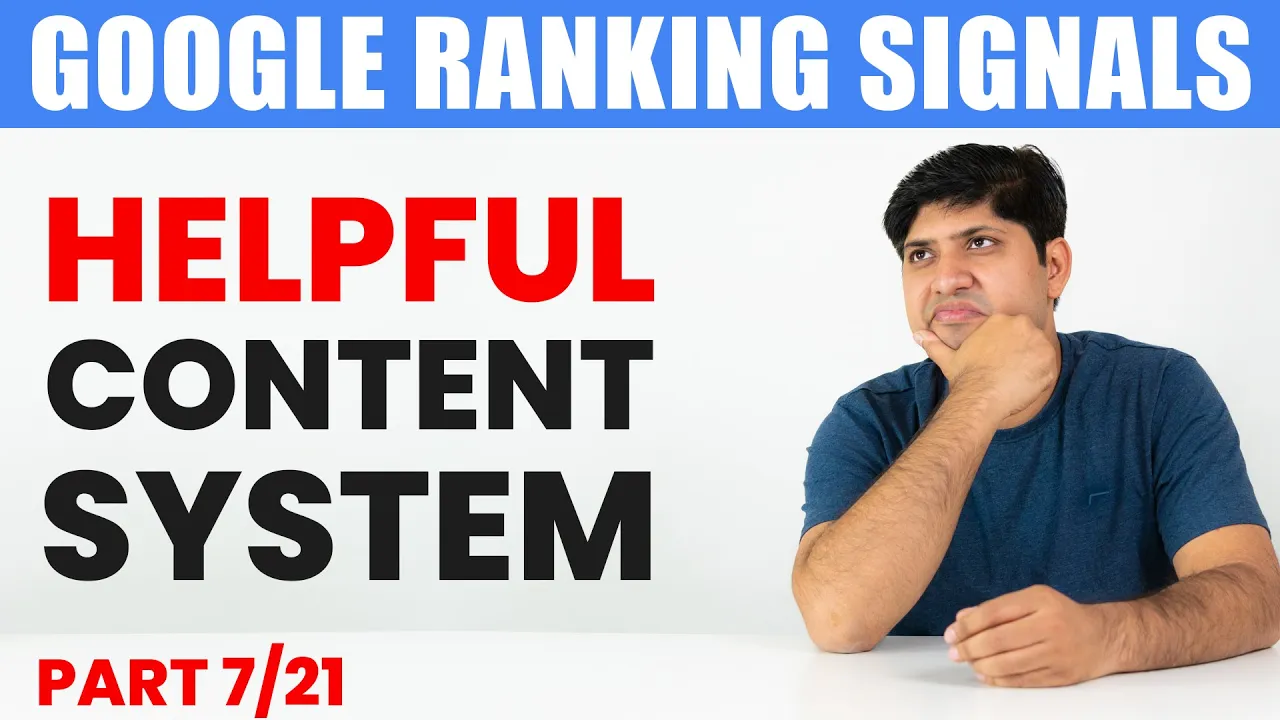With the SEO industry changing rapidly, if one needs to promote their website, then one must understand the Ranking Signals employed by Google. This article focuses on the Helpful Content System – a new development in the family of ranking systems that Google introduced. The Google algorithms will rate content as beneficial if we focus on its effects, working mechanism, and what content producers should appreciate.
Who is the target audience for Google’s Helpful Content System? 📝
Google developed the Helpful Content System on August 18, 2022, as part of an update to improve the quality of content appearing in search results. The main point is: that Google itself defines what is content for people — for people. Machines-generated or written content for the sake of ranking may not be appreciated by those who consume it.
The system takes into account the underlying purpose for which the content is created. It is essential to understand whether the purpose of the created content is to help users or just to game the system. Therefore, the closer such content is to pure traffic in terms of its core purpose content, the lower its chances of success in ranking will be.
Why is Human Content Important 🤝
Humans create content that is truly informative for the audience, rather than just producing it without considering their understanding. Google has repeatedly stated that AI-generated content is not inherently wrong, but it has to have a reason. If the audience finds the content informative or helpful, it is likely to rank well.
The purpose for which content is created is another thing. For instance, if the reason for writing is simply for traffic for the sake of traffic, such practice may lead to poor Ranking Signals. User-centered, well-researched, and insightful content is likely to receive favorable ratings from Google.
How Does Google Evaluate Content? 🔍
To illustrate, when a website publishes a large number of plainly artificial intelligence articles with little or no valuable content, it likely triggers the Helpful Content System, leading to a drop in the site’s Ranking Signals. Businesses that create dense and relevant content, clearly targeted at their audience, should expect favorable outcomes themselves.

Consequences of Ignoring the System ⚠️
Note that Google considers the Helpful Content System a signal that applies to the entire website. When a site contains pages with unhelpful content, Google pushes down the rankings of the entire site in this scenario. For instance, when a previously good Ranking Signals site switches to posting low-quality content, such a site will increasingly lose its audience.
This loss does not happen immediately. It happens gradually. A site that was recording 1000 hits daily may experience a drop in that figure and given time, the dip would be considerable but not within a day. Authors are given time to amend their wrongs and make ranking changes in such a system, according to surveys.

Strategies for Creating Helpful Content 💡
Content creators should adopt the following approaches to meet the requirements of Google’s Helpful Content System.
Know Your Target Audience: Determine who your target audience is and what type of information they are looking for. Modify your content to cater to them.
Quality rather than Quantity: It is always better to submit a few quality posts than to overwhelm your audience with many sub-standard articles.
Don’t Fall Back on AI: In instances when you settle for AI content generation, ensure that it works Auxiliary to you and not instead of you. Where applicable assist in idea generation or research but keep a human element.
Share Your Knowledge: Talk about your knowledge and in-depth ideas that you can present to readers. They will appreciate this.
Work on Suggesting New Content: Never allow your readers to find stale content on your website. Always demonstrate to Google that there is value to your content and it is not wasted.

Addressing Content Decline 📉
If the Helpful Content System has downgraded any site, measures to recover would be unclear. Deleting the content that contributed to the decline of ranking and improving the ranking by providing good quality articles consistently can aid in recuperating. Nevertheless, this process requires time, as the period it took for the initial decline to set in, takes a similar time frame.
Writers should not presume that changes will yield results overnight. To maintain traffic and rankings, we must engage in such activities continually and create high-quality content.

Conclusion: Embracing Helpful Content for SEO Success 🌟
The Helpful Content System encourages the relevance of content to the users in the process of search engine optimization. By comprehending this system, aimed at increasing the Ranking Signals of the inserted content, the content developers come up with a strategy for content creation.
As a result, the focal point of all activities should be preservation of user value and enhancement of user experience through a high level of Contextual Advertising delignification over just information providing. We will satisfy Google’s algorithms and create a permanent audience who loves our pure content with this approach.

